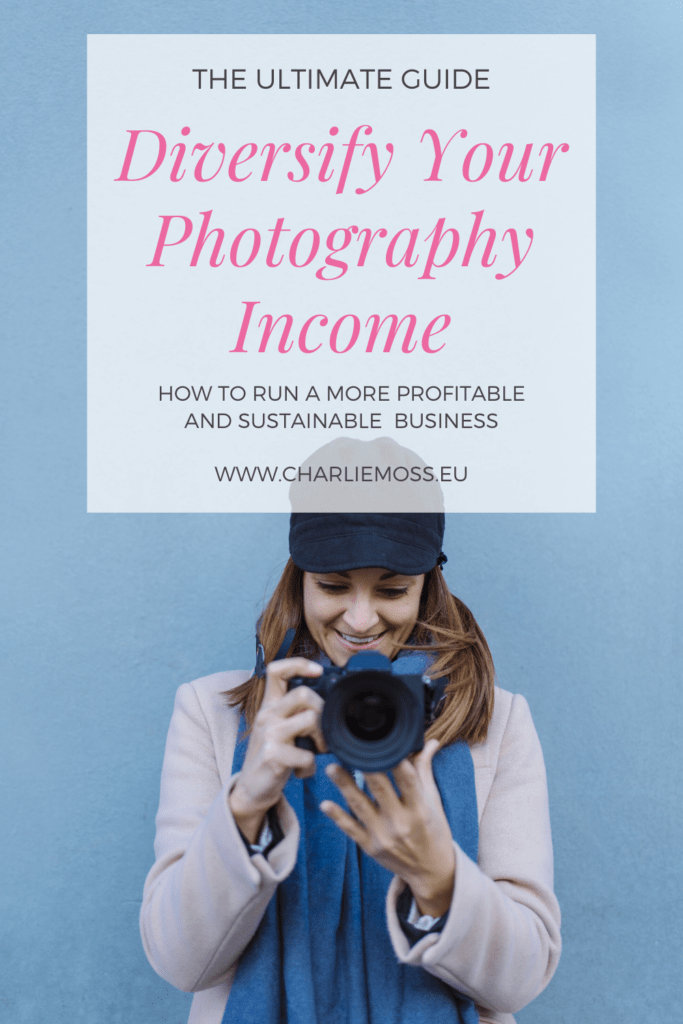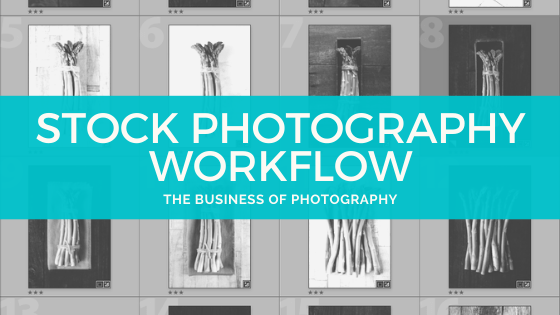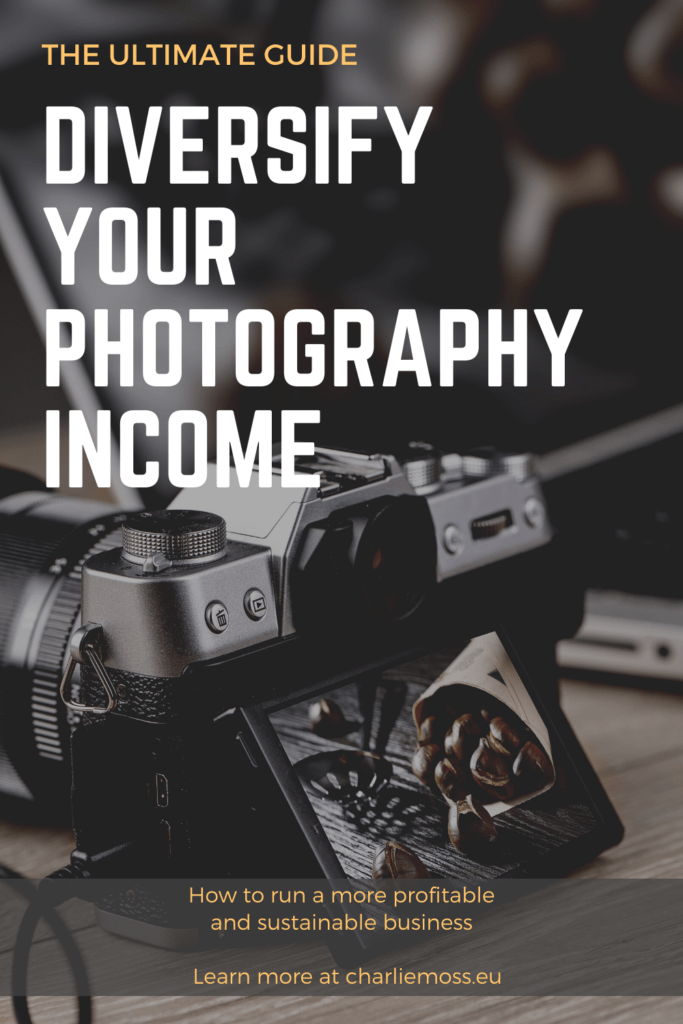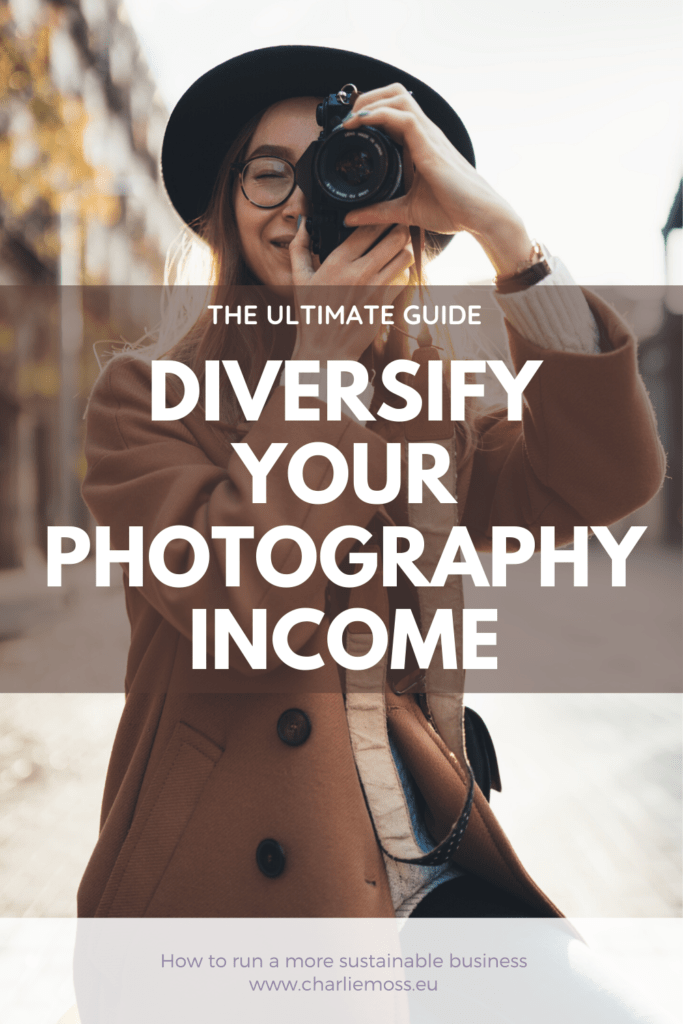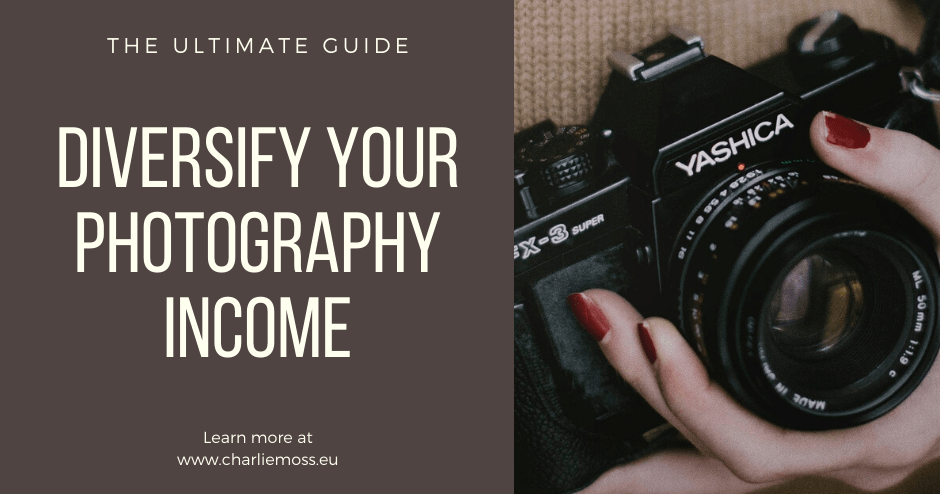
12 Apr The Ultimate Guide to Diversifying your Photography Income
In these strange and uncertain times, many photographers will be trying to make a plan for the future. And if you’re feeling up to it, one of the most important things you can do now is to see how diversifying your photography income can get you back on your feet as soon as possible (and even help you weather future storms). Passive photography income should be the base of your photography business in order to provide a stable income even when other income streams have dried up.
Many photographers will have had their main, and often only, income stream taken away by the global pandemic because they can no longer meet clients in person. Others will have lost jobs completely unrelated to photography and will be wondering if when this is all over they can finally find a way to make a go of their dream of being a photographer
Advice for your side hustle
If this venture is going to be a side hustle for you, let me give you a little advice. Open both a current account and a savings account for your business. The current account will manage your multiple streams of income, allowing you to see exactly what your incomings and outgoings are at a glance. Some of your revenue streams will be quite small at first, so they can easily get lost in your personal bank account. This will also help you manage your cash flow so that you’ve always got money to pay for subscriptions for things like your website or editing software.
And make sure you put a little aside each month in your savings account. One day you’ll lost an income stream or need a new camera or computer, and you want to have the money available for moments like that. It’s far better than using a credit card.
Treat your side hustle like a part time job. Give it regular hours and make sure you’re earning a wage that you’re comfortable with. Eventually, you’ll be able to ditch the full time job and your side hustle will become your only hustle!

Some of what I’m going to tell you are things that have worked for me. Others are tips I’ve picked up from my time writing interviews with dozens of top photographers in all parts of the photography industry.
Here’s the quick list if you want to jump straight to different sections, starting with passive photography income:
- Stock Photography
- Blogging
- YouTube
- Write a Book
- Brand and Influencer Photography
- Fine Art Print Sales
- Patreon
- Produce a Course
And if you love the blogs I write, consider signing up for my photography newsletter so that you can get a bit of me in your inbox!

What is Passive Photography Income?
Passive photography income is income that you work on once and then sells over and over again without you putting any more effort in. Ideally, you’ll take shots that you were commissioned for, and manage to put them to work elsewhere. It’s the ultimate approach to diversifying your photography income.
This was how self-employed photographers traditionally would traditionally secure their future income for retirement. They’d shoot some images on a commercial job, that they were paid for there and then, and then those photographs would keep working for them, for the rest of their life.
Passive income is a way to stop being tied to an hourly wage. And it’s how to earn money while you sleep.
The key is to train yourself to shoot extra shots while on a job with a client. If you’re shooting a construction site for a construction firm, are there are small details that you could shoot while there that could be submitted to a stock library? Perhaps you’re a pet photographer, would any of your clients allow you to submit your images to a magazine about dogs in order to generate passive photography income? If you’re photographing a model for a clothing brand, would the model be willing to stay after and shoot some potential book covers for a small amount extra?
Let’s explore some of the different places that you can submit images like these.
Stock Photography
There are hundreds of stock photography agencies out there. They range from huge generalist agencies to small boutique agencies. All of them fulfil different needs in the marketplace, and all of them require different kinds of photographers and images but they can all generate passive photography income.
Stock photography agencies mostly fill a budget hole. What they essentially do is provide imagery to people who need it, at a price that is cheaper than hiring a photographer (or taking the photo) themselves. And the reason that this works for the photographer is that they can usually sell the same picture (and pictures from the same shoot) multiple times over many years.
If you want to submit photographs to the stock agencies you need to be on top of your game technically. These photos usually need to be flawless – the exception is if you have photographed something that nobody else has.
It’s also important to remember that stock photography isn’t always glamourous. Sometimes the photographs that sell the best are downright banal.
Do you want to see the image that I have made more money from than any other via stock photography?

It was shot in 2007 on my Mum’s living room floor with two lights and a bit of white vinyl from the fabric shop as a backdrop. I shot it on a cheap Canon 350D (an entry level 8MP camera launched in 2005), with an equally cheap lens.
And yet it still sells for me a couple of times a year. Sure, I won’t pay my rent from sales alone of little Ronnie the cat. But in the grand scheme of things all of this passive income adds up. (My second best selling image is a handful of white mushrooms, go figure).
Stock photography (and passive photography income), at its heart, is a numbers game. Just like the lottery, you have to be in it to win it. The more images you have placed with stock photography libraries the more chance you have of selling them and this is the foundation of you should approach diversifying your photography income.
If you want to know more about my stock photography workflow you can read my article on it here. In the article I detail my slow but steady approach to stock photography, and the tips and tricks I use in Adobe Lightroom to speed up the process.
So what kinds of stock photography libraries should you be looking at?
General Stock Photography Libraries
There are dozens of big, generalist, stock photography agencies out there. And what they do is take your images and try to sell them to anyone who needs photos. Generally these larger agencies will be selling business to business. So clients will be newspapers, educational textbook publishers, advertising agencies – anyone who needs photographs for premium projects.
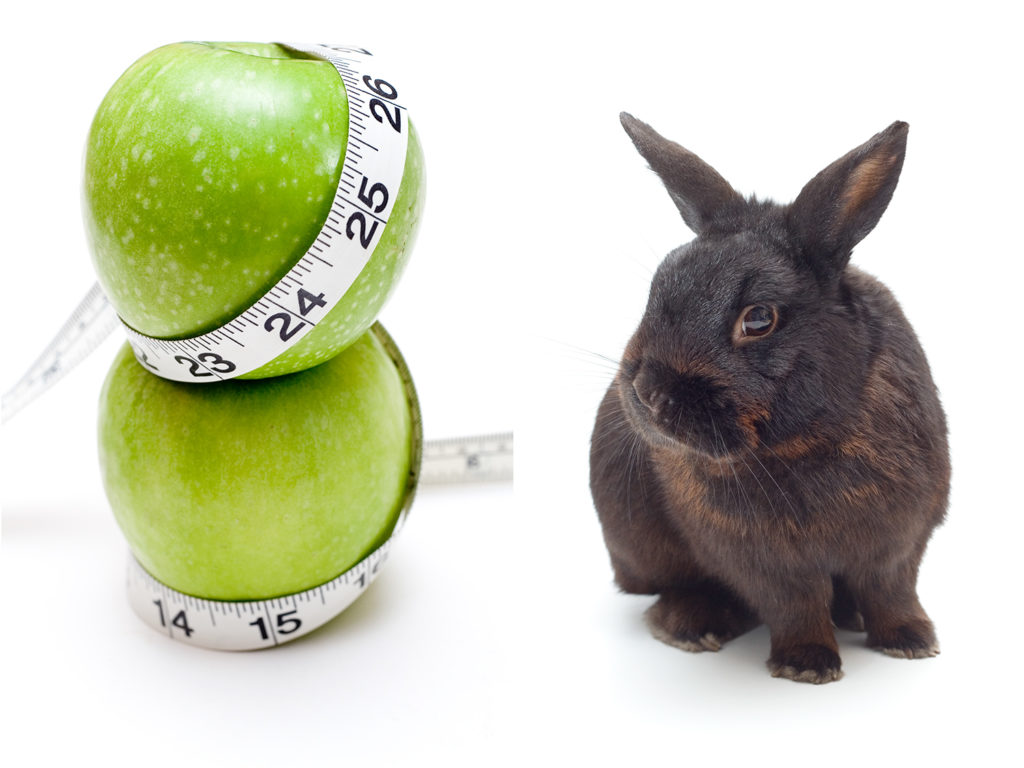
These are two images that have done relatively well for me at general stock photography libraries. You see, they’re generic enough to do well for a wide variety of clients who are looking to purchase images. Oliver the rabbit has appeared on vets websites, a rescue charity, and even on bottles of medication that went into stores. Whereas the apples have been used on personal trainers websites, websites about health and nutrition, and have even in a few newspapers. Both continue to contribute to my passive photography income well after they were shot.
Of course, sometimes the big general stock agencies can have quite specialist collections within them too, and if you are a specialist photographer you can do well at them. I used to know a photographer who was a horticultural scientist. His had a massive library of images of plants which were all correctly labelled with their Latin names as well as other helpful information. His images were featured around the world on websites and in books because picture researchers always knew that they could count on his captions as being correct. If you are a specialist photographer you can really get great results from stock when you begin .diversifying your photography income
Specialist Stock Photography Libraries
There is a specialist stock photography agency out there for anything you can think of. Food images, science images, even libraries that focus solely on their local area geographically. If you have a large number of images that are in one particular niche then a specialist agency might be the way to go for your business.
For instance, if you are a food photographer or stylist who is commissioned to shoot food images for magazines, then contributing outtakes and other images that you can produce with little effort to a specialist food photography library could be a really good way of providing a passive photography income in years to come.

The above two images were shot for a different kind of specialist stock photography library – one that specialises in book cover photography. Instead of targeting general clients like textbook publishers or news websites, they concentrate entirely on selling images to book publishers who need pictures for the front of fiction books! Agencies like these can be a great way for photographers to work on creative projects.
Microstock Libraries
This is a somewhat more controversial end of the stock photography game. Microstock libraries around twenty years ago offering limited license photos at bargain basement prices. Photographers would see as little as 20c per sale of a photo, compared to hundreds (or even thousands) at a traditional agency.
I had portfolios with microstock agencies early on in my career and made a few thousand, but eventually I took advice from some friends and moved entirely to the more traditional stock agencies where I make more passive photography income than I ever did with microstock photography.
That’s not to say that some photographers don’t make lots of money from microstock – there are some that do. And others have a healthy extra income stream that makes up their income. But the reality for most microstock photographers is a few dollars here and there.
These are huge generally photography libraries with high technical standards. You’ll need to keep uploading more and more images just to keep up with the churn, by all accounts. But if you land upon something that is popular and fashionable right now, you can make a lot of money.
Blogging
I’ll let you into a secret, this little blog earns me money each month. (Well, it’s not exactly a secret since I regularly post affiliate disclosures in blog posts). Not much, but enough to make it worth the time I spend updating it.
I run a couple of other blogs in different industries that make far more money than this one though. And that income comes from a variety of different places, which I’ll run you through.
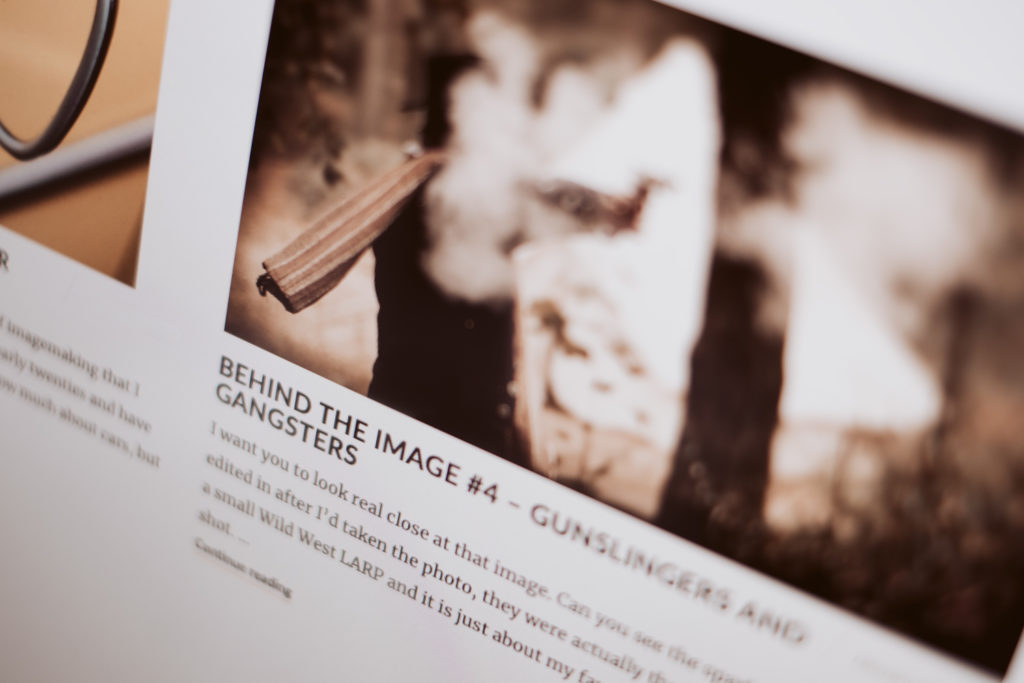
But what is worth pointing out is that I’d struggle to run these other blogs without being a photographer. The internet is such a visual place. Sharing a link on Facebook without a picture is guaranteed to get you approximately zero clicks. And you couldn’t even get traffic from Pinterest without images. This knowledge of producing and working with imagery places photographers in an ideal place to blog about almost any subject.
There are many things you could write a blog about. Photography is perhaps the most obvious. Every photographer knows something that they could teach another photographer. And if you already have a portfolio website then it shouldn’t be too difficult to add a blog (just like I have here, with the addition of an “articles” section in the menu). It’s a quick and easy way to start diversifying your passive photography income.
The bonus of blogging is that it also helps drive traffic to your site from search engines. So it’s a win-win strategy – it creases the number of clients you potential have, and it pays you while you sleep! For instance if you are a newborn photographer you might want to blog about where people can buy great outfits to photograph their kids in, or what toys their own kids really loved. A boudoir photographer might want to blog about where their clients can find the most awesome, luxurious lingerie for their shoots. All of these kinds of posts can be monetised, not just by gaining direct photography clients.
Or you could combine your skill for photography with another passion that you have. The blog I have that earns me the most money is mostly focussed on sewing and crafting – something I mostly do for fun in my spare time. I run another on live action roleplay which also contributes to a part of my monthly income.
Blogging is a long-game income stream. It requires quite a bit of initial effort to produce a critical mass of content that will then see people coming back time and time again. But it’s an ideal thing for people to spend time doing in the early stages of their photography business when they’re still not quite filling their week with lucrative photography jobs.
But how do you make money from blogging? A long time ago it used to be all about selling advertising on your site. But let’s explore the different ways that people make money from blogging now that might be useful to photographers.
Affiliate Income
This forms the backbone of my income strategy for my blogs. It’s quite simple: I write about a product, and then in that blog post I will link to the product I’m writing about. Through various affiliate programmes that I am signed up to, I get a commission on sales. Here’s a few I’ve written on this site:
- A review of some close-up filters I use
- Some books on fine art photography that I recommend
- News about Bluprint offering free photography classes
Mostly my affiliate earnings trickle along in the background. My first goal was to cover all my web hosting costs monthly with affiliate earnings, and it didn’t take long to hit that when I started monetising my site. Then I aimed to cover all the time I spent writing blogs at minimum wage – and again I hit that relatively quickly.
Now my affiliate earnings are a key part of my income as a photographer and writer because they have started to provide a substantial monthly income that is pretty consistent across my three main blogs. Certainly consistent enough that I rely on it to pay my bills and wages!
What you need to be aware of with affiliate income is that it can peak and trough quite considerably. For instance, I wrote a post on each of my sites at the start of the pandemic advertising the fact that Bluprint was offering free photography/craft classes because of the lockdown, and I saw $1200 income in just two days. But I also know that my income in the future will be lower, so I can’t just take that money out of my business account and spend it all at once. You have to average it out over a long period of time.
The Amazon affiliate programme is probably the most well known of all of them, but it also pays a tiny percentage of each transaction. However, as I’ve already said, it all adds up over time.
My best performing affiliate programme across my three blogs is ShareASale, and almost all of my revenue here comes from Bluprint commissions. My audiences on all three sites love to learn practical skills so Bluprint, as a company who sell online classes, always does really well for me.
AWIN is also an affiliate programme that performs well for me. They have a wide variety of different businesses signed up that you can earn commission on, but one of the most important for me for this website is WEX Photo Video, one of the leading photography equipment sellers in the UK. The commission on WEX purchases is just 2% for cameras and lenses. But 2% of £1000 is twenty pounds, and a few of those around a new camera or lens launch soon adds up! The cookies track for thirty days, so if someone visits your site, clicks the link, and then buys something three weeks later you should see the credit for that sale.
Blogger Outreach
Now, this is really active income rather than passive, because you have to do the work for it to get paid. However, it relies on a passive base – aka your blog.
For the past two years, I’ve been undertaking paid work for GetBlogged, a blogging agency specialising in blogger outreach. Never heard of blogger outreach? Neither had I, to be honest.
Blogger outreach is when you get paid, by brands, to write articles on your website or blog. The key is that you include links in a certain, specified way. You might wonder what the point of this is, and that point is largely about SEO.
One of the metrics that Google looks at when it decides where to rank your site and the pages on it, is the amount of backlinks you get. That is, links back from other sites to your own. Carefully placed links on other peoples sites can help you improve your SEO and therefore place higher in search results. And that’s why they pay carefully selected bloggers to help with this.
Blogger outreach was about 10% of my total income last year, across all of my various income streams. But you do need to have well-established sites in order to make it really work for you while you’re diversifying your passive photography income. You also need to be available for quick turnarounds; four days is the usual length of time that agencies like GetBlogged will give you to write and publish a post.
YouTube
Now, I don’t have a YouTube channel. I keep thinking about having one, but there are lots of different things that put me off (including, but not limited to, feeling like I don’t have a face or voice for television, and having to learn new skills). But just because I don’t have one, doesn’t mean that you shouldn’t.
I have some friends who run small handmade businesses, and they make a good amount of income from tutorials that they’ve recorded and uploaded to their YouTube channels. And I imagine that many of those recording photography tutorials are earning good money, otherwise they probably wouldn’t be doing it!
There’s also the side-benefit, like blogging, that this content will drive people to your website, and potentially turn them into in-person clients.
I can’t tell you how much money putting videos on YouTube will make you. I do know that it’s quite a long process because you need to get a certain amount of followers before you can even think about monetising your content. However there’s also opportunities for advertising and brand placement within videos, if you have a good professional network.
Looking at some content creators income reports it seems that a common figure is around $1000 per 100,000 views of a video so this seems like a great way to start diversifying your photography income. Obviously getting that many views is a challenge that requires great content and great marketing, but those are also views that can build up over years. Once a video is online it doesn’t stop earning money after a few weeks, it continues to build with the rest of your portfolio.
Write a Book
Like I said earlier – every photographer knows something that they can teach something else. And I’m sure I’ve heard it said that everyone has at least one book inside of them (sounds uncomfortable, but ok).
A book is, just like blogging or creating YouTube videos, just a way of disseminating information to people who want to learn. And with the advent of digital publishing, you no longer need to find a publisher and sell physical copies.
Anyone can learn to publish a book on platforms such as Amazon. The hard bit is writing the text (you probably want to be aiming at 30,000 to 50,000 for a non-fiction book, and I can tell you from my Masters by Research experience; 30,000 words is both too many and not enough at the same time).
Learning to format the book and then getting it onto the Amazon platform is easy in comparison. And if you don’t want to do that work yourself there are plenty of freelancers who will happily do that job for you.
I highly recommend this book if you are looking to write your own. By following the method in How to Write a Nonfiction eBook in 21 Days I outlined my Masters and I actually wrote most of a book on digital studying methods (which I never published…). It lays everything out in an accessible way that makes the task of writing a book seem far less daunting as you work to start diversifying your photography income.

There are many people making a living out of writing non-fiction e-books and theres no reason that you can’t diversify and supplement your photography business this way. There are all kinds of different subjects that you could write photography related e-books about, especially if you have advice about running a photography business, those kinds of books always seem to do well.
Brand and Influencer Photography
This is another combination of active and passiasve income, but I think worth putting here because of the way it can continue to make income for some time.
Last year at The Photography Show I had the privilege of hearing Emma Drabble speak. Her talk was about how to shoot and sell images to clients for use on social media.
Now, brand photography is not anything particularly new and revolutionary at this point. It’s been going on for quite a while now. But what was interesting was the pricing model that Emma uses with her clients and the way it generates passive photography income.
Traditionally, businesses didn’t usually need quite as many images as they might today. But with the rise of social media businesses are finding themselves in situations where they need many, many more images that reflect their brand. If each image that a brand wanted to post on social media had to be licensed at the kind of traditional rates that you might have seen corporate photography charged as, small businesses would never be able to hire photographers.
So Emma rethought her approach and worked out how she could bring value to the small brands she wanted to work with in her local area, while also providing herself with the kind of income that she wanted.
If you’re a brand, you can hire Emma for an all-inclusive rate. And that rate includes time shooting in your business, as well as all of the finished images from your shoot to use on social media. So far so traditional. But that’s also more than many small brands can afford to budget.
What Emma began to do differently was shooting images for a brand in return for a lower “call out fee” that didn’t include any images in the package. She’d then process the image she shot and upload them to an online gallery like Shootproof.
Then, at any point after the shoot, brands could purchase images from the gallery to use on their social media. Need an image for instagram? That’s £20. Need an image to accompany an interview for a magazine? There’s another £20. Want to post something on Facebook and need an image? £20 again.
In this way Emma increased her value to startups and small businesses, allowing them to build their web presence and image library at a rate they can afford. And she can literally be earning money while she works on other jobs, for as long as her clients need images. Branding photography can be a good way to start diversifying your photography income.
Fine Art Print Sales
You might have assumed that doing fine art print sales would be a lot of work. And if you go down the traditional route that’s pretty accurate. Getting prints made in batches up front also requires a large financial outlay at the start. Many photographers selling prints often sell at art markets or similar too, and that requires a substantial time outlay.
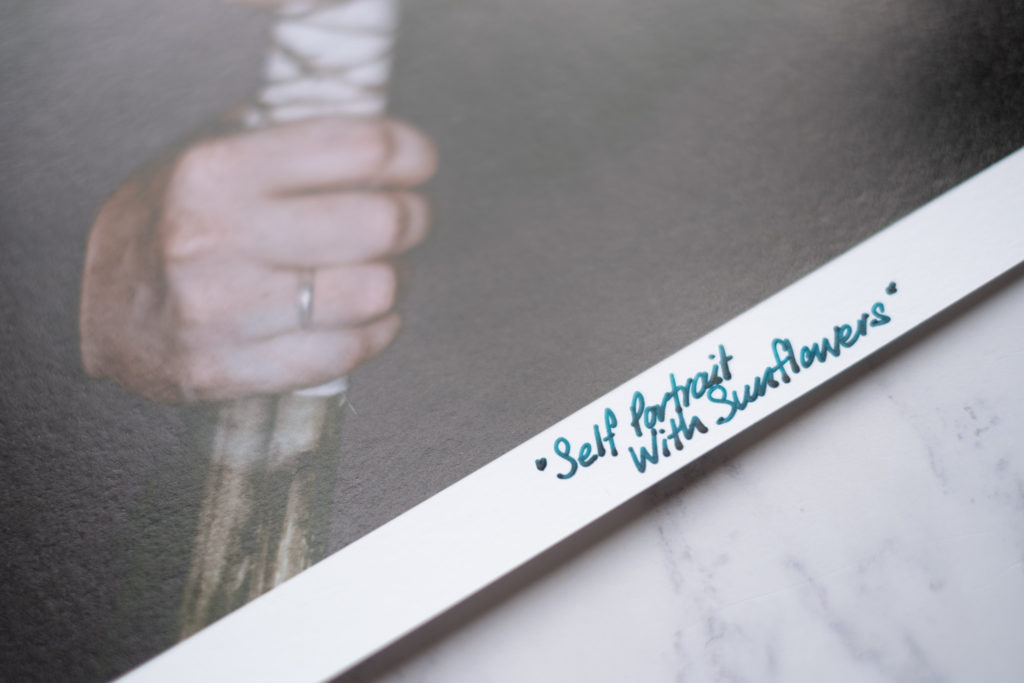
But there is another way. There are now online websites that allow you to upload your images, add a caption, keyword them, and then people from all over the world can purchase your images. The website deals with all of the printing and shipping, so you just collect the money. I’ve used Fine Art America for years and although I don’t get many sales, it’s certainly been worth the investment (and actually, I keep meaning to spend a week just uploading new images to the site, but I never seem to find the time.
Society6 and RedBubble are other websites that offer a similar service, and they all appeal to different kinds of audiences. But all three have the capability to sell prints of your work, amongst other print on demand items. One of the good things about these sites is the global audience that you’re exposed to. You’ll have a hard time replicated that on your own site.
However, for some photographers, their own site remains the better option. I used to have a website hosted with SmugMug that had a fully automated shipping process. A customer would place an order on my website and a few days later a pro lab in the UK or the US would ship the order out to the customer directly.
Both options can work. If you have a large following who you think will buy your prints then having your own site and doing your own marketing can help you keep a larger share of the profits. However, if you don’t have that following, then paying someone else to do the heavy lifting through your commission can be a great strategy.
Patreon
So Patreon is a way for people to support artists that they love with no obligation. It’s kind of like setting up a monthly subscription to a tip jar. It really works best for content creators who are putting out content of value at no cost to the consumer. So writers, YouTubers, musicians, artists, etc.
I started my Patreon page when I was photographing events for the live action roleplaying community. I was giving out small images for free on my Facebook page and people loved that. But they also wanted a way to financially support me that didn’t always involve buying prints and the like.
It really took off for me, and while I was actively shooting events I was making about £150 a month, which covered my expenses and bought me a few treats along the way. In return I gave my Patreons either nicely formatted digital desktop backgrounds made from photos of the event, or I sent them out a postcard once a month from an event I had shot.
When I stopped shooting the events I paused and rethought my strategy. I realised that what I really wanted people to support me for now was my educational writing on photography. And so I opened my Patreon back up with a different set of tiers that looked to encourage a creative photography community. The top tier of patronage is a mentorship option.
Patreon doesn’t work for everyone. You have to have a substantial online community that you can mobilise into supporting you. I had around 1500 fans on my Facebook page at that point primarily from the events I was photographing, and that’s where I got my support from initially. Building up the support for my photography writing Patreon has been harder, but it does provide me with a good, regular, and predictable income each month. It’s worth a shot while you’re diversifying your photography income.
If you do write about photography and provide some kind of educational content then I think Patreon could be a great option for you. It allows people to support you at their own pace and with no obligation. Even if you open up a bottom tier of $1 per month you’ll find that in time this level does build up. And many people pledging at a lower amount is better than a few people pledging higher – because you don’t notice so much if you lose one or two of the former!
The piece of advice I have for you if you’re considering starting a Patron is to be yourself. Your fans will come to your Patreon hoping to interact with you as a person rather than you as a corporate brand. Go the extra mile, have conversations, and pitch it as a legitimate way that fans can help to contribute to your income as an artist. People love to feel like they’re directly making a difference.
Produce a Course
There are some really great photography courses out there. But that doesn’t mean that you couldn’t also produce a really great photography course. I’m going to give a little shout out to two interesting photography courses that I think are worth your time to look at and think about if you’re interested in creating your own. They both follow different models for making income.
The first is two Instagram specific courses by Me and Orla. I first discovered Sara via her podcast, but her photography is absolutely beautiful And so is the work of her students too if you follow the related hashtags on Instagram. For this course, you pay a fee upfront to gain access to all of the materials.
The second is A Year With My Camera. It’s aimed at complete beginners to photography and has six start dates through the year, where you move together through the course with the cohort. The course consists of an email each week with resources and it’s completely free. The creator of the course makes her money via sales of a related workbook on Amazon, merchandise, and through £4.99 a year subscriptions to the app that is available on both iPhone and Android.
Different approaches to running a course will mean that each individuals experience could be more passive or more active when it comes to the income it generates. Some courses will be more hands-on with each cohort of students, others will be relatively hands-off. Some courses even become popular enough that you can hire someone else to inspire students and moderate the forums that are being used!
The key is, I think, to automate as much of the course delivery as you can. For instance, there’s a crafting challenge that I took up a few years ago, it was to make a small part of a quilt each day for a whole year. Kind of like the 365 photography challenges you undertake (or the A Year With Your Camera course). The creator of the quilt challenge designed all the patterns and then uploaded them to an email system that sent out an email every day with that day’s pattern. You signed up before the 1st of January, and you got an email every day for a year. There was never any contact with the author of the pattern directly and the course now runs itself automatically every year. Genius!
What is Active Photography Income?
Active income for photographers is when you actually have to do something every time you want to get paid. So for instance, a portrait shoot is active income, because you have to meet the client, take their photo, sell the images, print the images, every time you want to get paid for that revenue stream. Wedding photography, newborns, boudoir, architectural shoots – these are all active income streams for photographers.
So in the section above, Blogger outreach is really a kind of active income, even though it’s built on the base of a passive blog. And shooting brand photography for clients is active income, while letting them purchase long after their session is passive income.
Mentoring
Mentoring is something that I offer through my Patreon page, and it’s something that took me a long time to decide to do. Many experienced photographers decide that they have something to offer less experienced photographers that is more than an ebook or course, and mentoring is the solution for people looking for more customised guidance.
I offer mentoring that specifically deals with creativity and subjects related to art. I’m studying a PhD in Art History so I think I can offer something different from other photography mentors. You need to find your niche. That might be business for newborn photographers or marketing for wedding photographers. It could even be mentoring someone through producing their first book or something similar.
Mentoring is about helping an individual to explore and grow through their own practice and experimentation. It isn’t about telling people the “correct” way to do things, but rather about helping people realise their own path and fulfilling their own potential.
I highly recommend taking a course on coaching and mentoring before going down this route. There are distinct differences between teaching, coaching, and mentoring. Knowing the differences and knowing how to approach these different fields will enable you to be a good mentor.
Writing
At the start of my writing career, a friend gave me this advice. They said that when writing for editors, there are three things you can do well, and you only need to manage two of them to keep an editor happy because many writers can only manage one:
- Hit deadlines
- Keep to the word count
- Produce copy that doesn’t need much editing
Well, shamefully I am rarely on time with the articles I write for editors (I’m usually only a day or two late though). But I generally manage the other two the vast majority of the time.
For both magazines and online content you’ll generally be selling “words and pictures packages.” That means you don’t usually charge them separately for the images. All the work I have done has always been charged per word or per article, and that’s included both the writing and the pictures.
Writing for Magazines
Generally, magazines pay better rates that digital. There are some exceptions of course, but magazines are where you want to be for the best rates. Historically it’s where the most in-depth and well-researched articles have been found, although some digital content hubs have really been challenging that in recent years.
There’s a pretty simple process to write an article for a magazine. You pitch the editor, and if the editor likes it then they commission you. If it sounds simple, it’s because it is.
First you need to find out who you need to pitch to, and get their email. A phone call works for this, just call the magazine and ask them. You can also go to the newsagents, look inside the front cover, and there at the front will be a list of staff and their contact details. Your other option is something like the Writers’ and Artists’ Handbook that comes out yearly. Every year that book pays for itself many times over for me.
Then, write them your best pitch in an email. A hundred words or so telling the editor what you would like to write about for them. Include details of any sources you have onside already, and attached a couple of clippings of work you’ve had published before if they don’t know you.
The tricky bit is that your idea needs to fit the magazine. So what I suggest is getting a few back issues of the magazine, and making a list of the distinct sections that the magazine has. Like a photography magazine might have a news section, a large how-to section in the middle, a real-life story, some reviews, and then some “final thoughts” on the last page.
Make a note of the articles that those sections have got in them, and also make a note of the people who wrote them. Check if those authors are staff writers. If staff writers always write the articles in particular sections then there’s usually no point in pitching ideas for those sections. However, if some articles seem to be being contributed by freelance writers, then you’re in with a chance – pitch away!
I cannot recommend this book in particular, by Catherine Quinn, enough. No Contacts? No Problem! was the book that essentially got me started as a freelance writer.
It’s a guide of how to put together pitches and work with editors. But perhaps more importantly it sets you up to cope with the seemingly endless rejection!
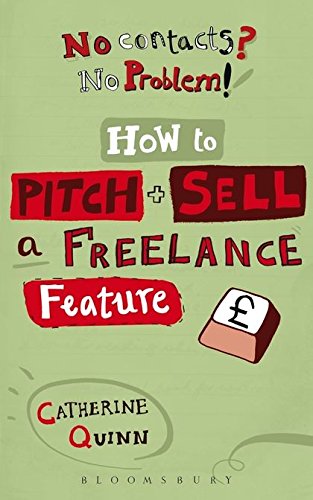
Many see publication in magazines as the ultimate form of success for a journalist. And it is nice to be able to tell people that’s what you do. But for me, the amount of time I had to wait to get paid became a problem. Most publications pay after publication of the article. And your deadline will usually be at least a month before that date. And some magazines will not pay you until 60 or even 90 days after publication.
So I found that I could be writing articles and handing them in on, say, 1st January, and then not getting paid for the work I’d done until almost April. And as a freelancer that was really hard on me. Also, if they push the article back by a month (or even a few months) they generally won’t pay you until after the new publication date. I had one crazy situation where I wasn’t paid (legitimately) for nearly twelve months after I’d done the work.
Writing for Blogs
In many ways, writing for blogs is quite similar to magazines. You pitch an idea, you write the article, they pay you. Hooray! In my experience, and my friend’s experience, blogs are quite likely to take a regular amount of articles from you per month so that they can plan their content strategy (unlike magazines, where it takes a long time to work up to this quasi-staff relationship).
There are upsides and downsides to blogs compared to print magazines. The most obvious downside is that you’re unlikely to get paid as much as you are if you write for a magazine. That’s just a fact of life, although there are websites that are breaking away and paying similar rates to magazines in their fields.
But the upside is that the digital content industry moves much quicker. I have occasionally gone from pitch to published in less than ten days when my clients have needed something quickly. And I consistently get paid the month after I hand the work in, rather than months after it’s published. Not all digital companies will be as good as this of course, but on the whole I’ve found them much more agile.
I also prefer writing for digital audiences. It suits me much better. The style is usually less formal and more conversational, and so I take less time to write digital pieces because I find it easier. And in turn that means that my hourly rates are actually about the same when you compare magazine writing with digital writing.
Content Marketing
You might read that heading and think to yourself “I’m not a marketer, I’m a photographer” but trust me on this one. If you can write blog posts and magazine articles about photography, you can be a content marketer.
There’s a lot of crossover between people who write for blogs and people who are content marketers, often they are one and the same. Content marketing is simply the marketing of a brand, product, or service, but by raising their profile through things like blogging, corporate magazines, and other content that is specifically not marketing copy in the traditional sense.
Now, I’m fairly sure I could write a blog post all of it’s own on how to get content marketing jobs. But instead I’ll recommend one that I read recently.
This book, The Freelance Content Marketing Writer, by Jennifer Goforth Gregory is well worth picking up. It teaches you what content marketing work is and how to get it.
There is a massive demand for content marketing in the photography world. Just think about all of the companies that you interact with as a photographer:
- Studios
- Camera Shops
- Manufacturers
- People selling courses
- Book publishers
All of those businesses require content for their websites and other online presences, and you could be the one to create it for them!
Podcasting
I briefly considered adding podcasting to the YouTube section above, but with a little research and talking to some friends who make podcasts, I reconsidered and popped it here in the “active income” section.
Of course, affiliate marketing, selling courses, and selling books are all ways that podcasters can make money (amongst others). Essentially you can primarily use your podcast to funnel people to your existing sales channels, and in this way you can increase your passive income.
However, Podcasters also often rely on selling advertising spots on each podcast. You know, when you hear the advert at the beginning, or there’s a short break in the middle where they talk about their sponsors? It might even be giving things away in a competition, or some other special offer.
According to The Atlantic, popular podcasters can make between $25 and $40 for every thousand listeners from sponsorship. Of course, it takes time to get to the stage where you can demand those kinds of rates, it’s a slow build strategy just like many of the methods listed in this guide.
Despite not having experience with podcasting, I did study Music Technology at school and have vaguely kept up with (some of) the tech that’s around for audio. And I will say this: with a little education and work you can set up a podcast very, very cheaply.
You don’t need the latest and greatest gear – you’ll find that people are very forgiving if they like the content you’re producing. I’ve quite happily listened to podcasts that are just done over Skype with all the poor quality audio that entails, but it doesn’t take away from the content.
I’ve always thought that photography was a hard subject to translate into podcasts, and I guess that’s why there’s a lack of really great ones on photography (or art). The ones that I find the best are the ones that focus on aspects other than the taking photos bit. So podcasts on creativity, podcasts on business, podcasts on theory – they all seem to do a bit better than those that focus on imagemaking itself.
So why not team up with a friend and record something? It’ll cost you next to nothing, other than your time, so what have you got to lose?
Create a Newsletter
Newsletters are having a resurgence right now, and quite a few freelancers I know, from varying industries, are adding newsletters to their repertoire. They allow you to deliver the other services and content you offer direct to peoples inbox, which is more powerful even than social media.
Your newsletters could be the kind that give special offers to new and existing clients, or they could be newsletters for photographers (like mine is) that funny people towards your various income streams. And don’t forget, newsletters that offer helpful advice of any kind can be monetised further down the line.
Platforms like Substack offer a way for you to have two concurrent newsletters running – one free and one as a paid subscription. These kinds of services could be worth investigating to see if they could become a part of your diverse income stream.
Digital Addons
If you have created content for a client then you might have the ability to create additional chargeable value using the photos you’ve already shot for them. The kind of content you can create will vary depending on the lind of client that they are.
For a wedding or family portrait client you might find that you could create digital slideshows from their photographs that could be used on Facebook or in digital photo frames. By setting their images to music in a way that tells a story of the day you have created new content that clients will see as valuable.
You might also find that you can create valuable physical content for your clients. For instance, after a wedding you could create custom thank-you notes for the couple to send out to guests from their weddings, or small mementos that could send to family and close friends that couldn’t make the wedding.
Corporate clients are a little different, but there’s still plenty of opportunities. If you have shot with them for their social media images, then you could put together short promotional videos using their images. Videos do well on platforms like Facebook and Instagram, with many users reporting increased engagement from video posts over images.
Gillian Walsh has made promotional videos a successful part of her income strategy, either offering it as an add-on for clients she’s already worked with or included as part of the branding packages that they purchase. It enables her to add value using assets that she’s already created, without having to meet up with a client and shoot again.
What will you do?
I hope that some of the ideas in this post for diversifying your photography income turn into actionable points for your business and that you expand and diversify your income streams. Having a diverse photography income is so important in a world where a single income stream can be wiped out so suddenly, as we’ve seen in this global pandemic.
If you use any of these ideas in your own business I’d love to feature you on my blog. So please do get in touch and tell me your story.
And if you like what I do, sign up for my newsletter!
AFFILIATE DISCLOSURE
I may earn commissions for any links that appear in blog posts on this site. There is no change in pricing if you click through an affiliate link.
